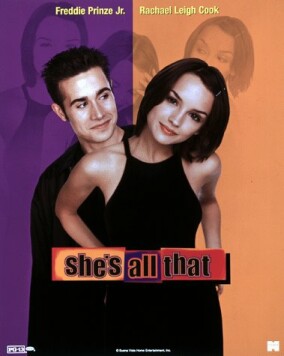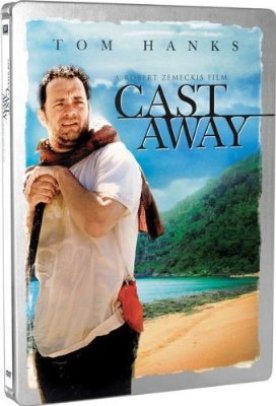Ravenous
Ravenous, written by Ted Griffin and directed by Antonia Bird, is one
of the weirdest movies I’ve seen in a long time. I even found myself rather
enjoying it for the amusingly original way it has of making its highly dubious
point. This is, as I understand it, the presentation of an essentially feminist view of
male and military societies — a view which understands nothing of the actual
workings of such societies but which is fascinated by the imagery of blood and
battle and loyalty and dominance and has found a strikingly allegorical if not
very successfully cinematic way of representing them in terms of cannibalism.
The temptations of power are here represented as the mythic Indian spirit, the
Weendigo, that is said to come upon men who have tasted the flesh of other men.
This is a kind of blood lust that never relaxes its grip on those who have
submitted to it. Eating human flesh is found to cure all illnesses, heal all but
the most catastrophic wounds, and make you unimaginably powerful with the
aggregated spirits of those you have consumed, but it will never let you
stop your career of killing and eating others.
That, the authors imply, is what war and its purpose of dominance over others
are like. The film presents us with an opening epigraph from Nietzsche — “He
who fights with monsters should look to it that he does not become a
monster” — which it does not appear to have noticed is not at all the same
thing as saying that he who fights with monsters must be a monster himself. For
the latter and much more doubtful proposition is what is presented to us here in
metaphorical form with the premiss that he who has once tasted the forbidden
meat is doomed to hunger for it ever after. It’s a bit like the vampire
mythology in that the transformation from man to monster can only move in one
direction — except that you become a monster by biting and not by being
bitten. Underneath the quotation from Nietzsche is another, attributed to
“Anon” — “Eat me.” The combination of seriousness and flippancy will be
carried through the rest of the film.
Its hero is Captain John Boyd (Guy Pearce), a man who inadvertently becomes a
hero in the Mexican War by shamming death from sheer cowardice, being taken with
a lot of other corpses behind enemy lines, and then coming to life in time to
aid his advancing countrymen. He gets a medal, but his commanding officer,
knowing or suspecting the truth, exiles him to the godforsaken Fort Spencer, a
federal outpost in the Sierra Nevada Mountains of California. Fort Spencer is
seen as a comic model of military absurdity. The commanding officer, Col Heart
(Jeffrey Jones) is a kindly, scholarly sort who likes to study Indian languages
but has no interest in maintaining discipline. In describing the half-dozen
other officers and men at the outpost to the new arrival, the Colonel
particularly mentions Reich (Neal McDonough) as “the soldier” and someone to be
avoided.
The others include the drunken medical man, Knox (Stephen Spinella), a cook
called Cleaves (David Arquett) who is forever spaced out on drugs and Toffler
(Jeremy Davies), a Jesus freak said to be “the representative of the Lord” to
Fort Spencer, together with a couple of Indians. Everything about their material
and moral conditions, including the ramshackle fort and its primitive amenities,
the bleak wintry landscape and the seemingly complete lack of unit cohesion in
this collection of weaklings, drunks and psychos is meant to debunk the very
idea of military honor and glory. “Did anyone do anything today?” asks the
Colonel at dinner, and the whole table bursts into a manic laughter suggesting
nothing so much as barely suppressed hysteria. “We have a great sense of
camaraderie here at Fort Spencer,” the Colonel explains to the newcomer. His
toast is: “To escape, in one form or another.”
Into the midst of this bizarre collection of pointless existences comes a
wandering Scot calling himself Colqhoun (Robert Carlyle) who claims to have
escaped from a party of settlers on its way to California under the guidance of
a military officer called Ives. He gives a nightmarish account of their
stranding in the mountains, their madness from hunger and finally their getting
to the point, led by Ives, of eating each other. He says that he was on the
point of being eaten himself when he left the monstrous Ives and the one other
survivor of the party. The Colonel decides it is his duty and that of his men to
go with Colquhoun to find the cave where such horrors are said to have taken
place and bring back any survivors, but when they get there they make an even
more horrifying discovery.
From this point onwards, what had looked like gritty historical realism
becomes macabre farce with touches of magical realism. There seems no other
purpose to it all than to repeat with variations the central image of the
ghastliness and absurdity of the male power game in which the rule
is — here, literally — eat or be eaten. The film ends with a shot of its
sole female character, an Indian woman called Martha (Sheila Tousey) who has
instructed the sensitive Captain Boyd in the lore of the Weendigo and has
somehow managed to survive the carnage, looking over her shoulder as she walks
away from that which once represented itself to her as civilization. “How
civilized,” says one of the surviving eaters as he tucks into a stew made from
one of the non-surviving eatees. Martha’s grateful escape from such civilization
and back into the (presumably) more benign wild nature from which she has come
adds a serious (if foolish) conclusion to what is otherwise mainly comical to
this point — a kind of theatre of the absurd. But those without strong
stomachs will probably not find the comedy much to their, um, taste.
Discover more from James Bowman
Subscribe to get the latest posts to your email.







